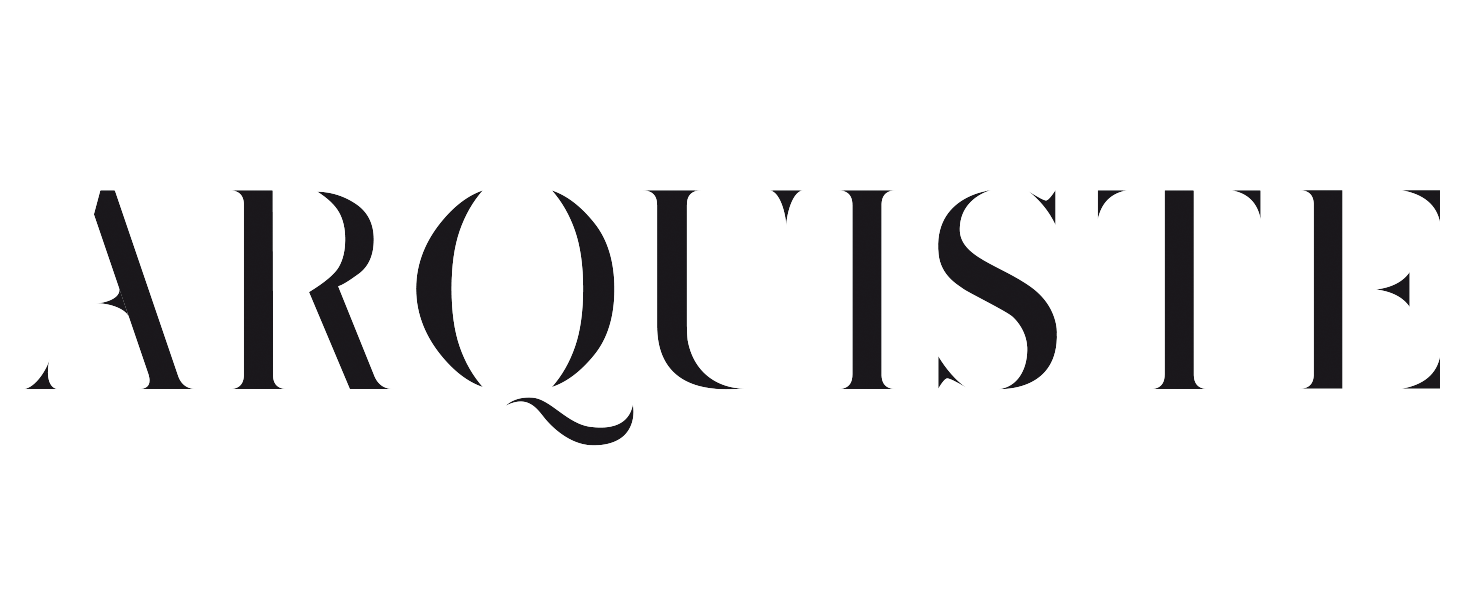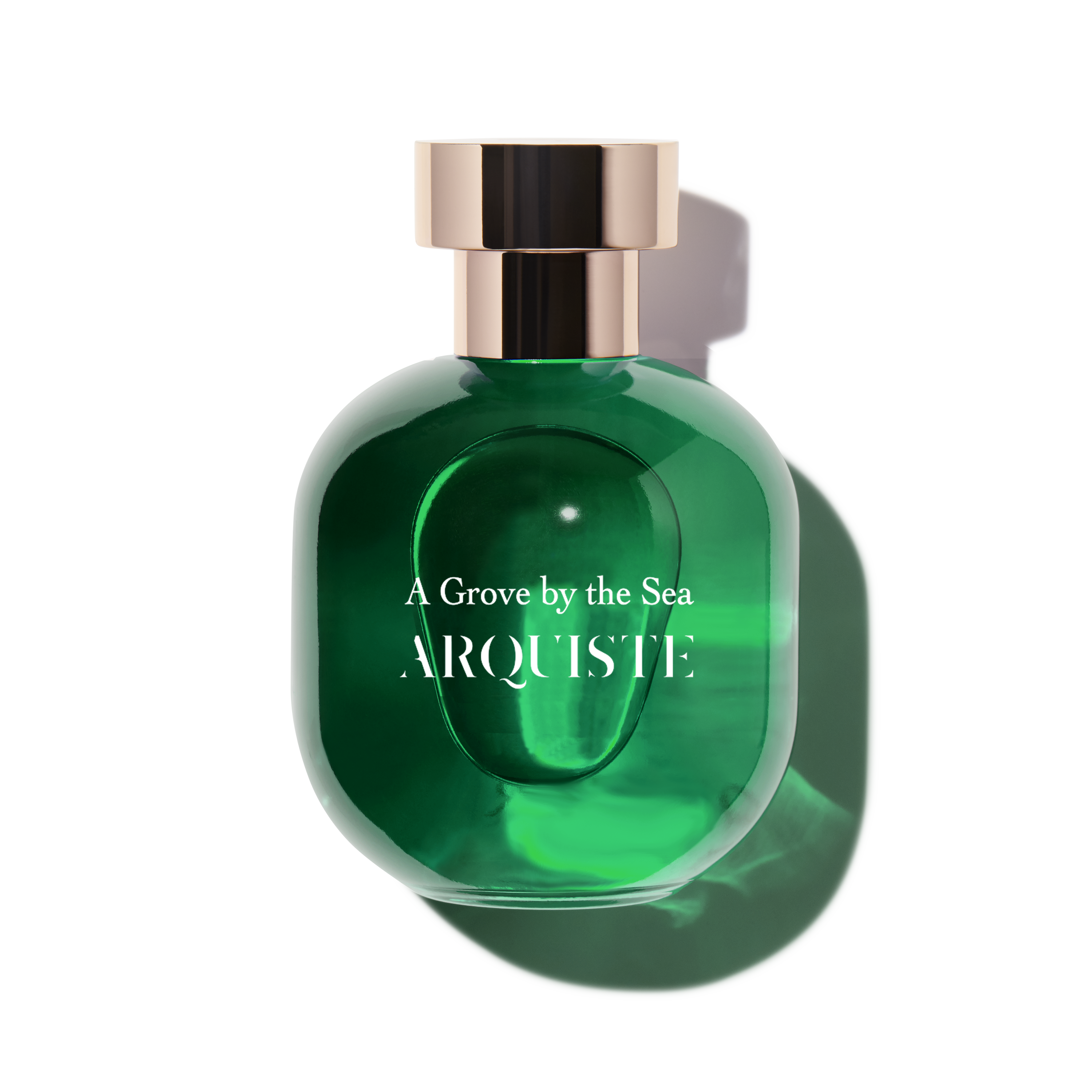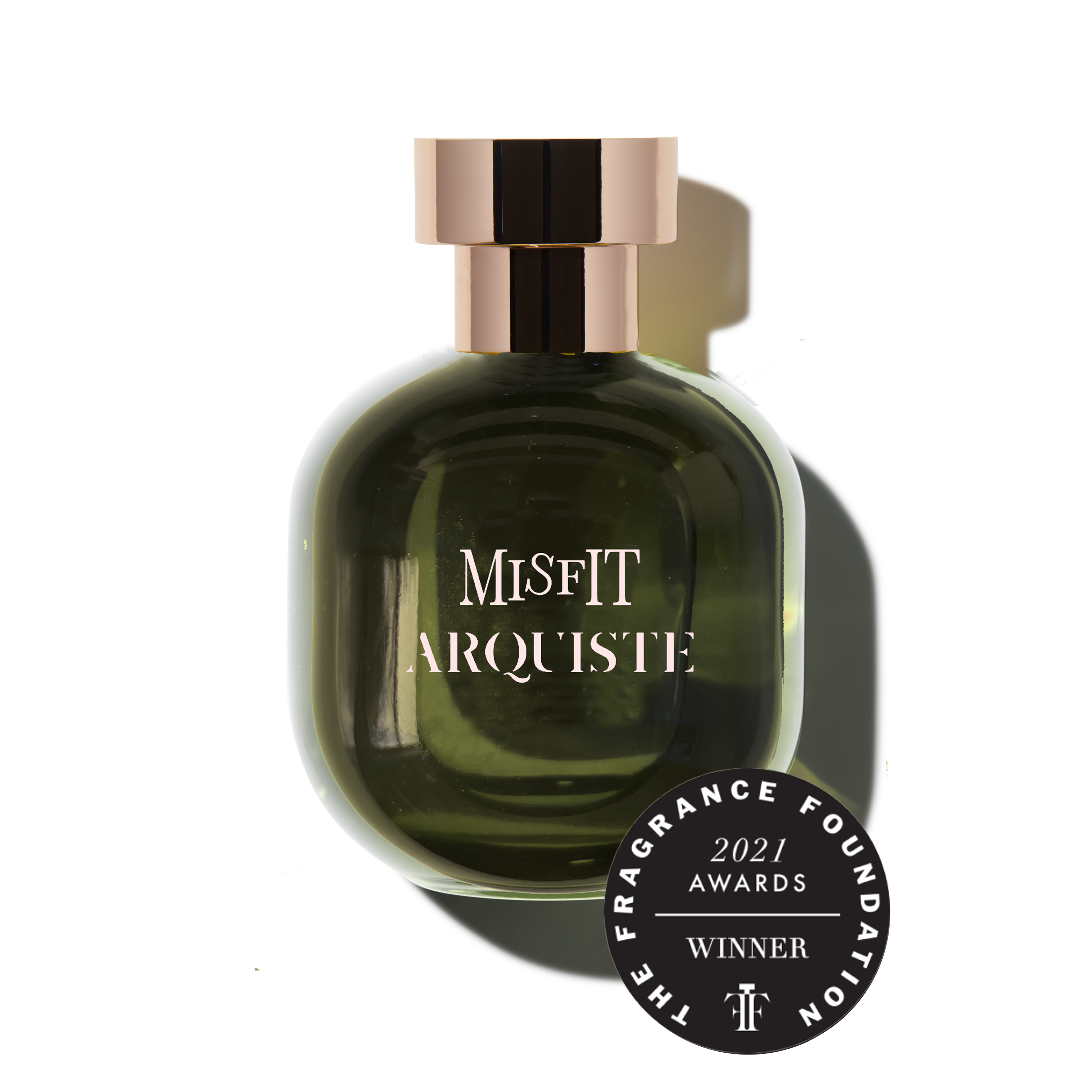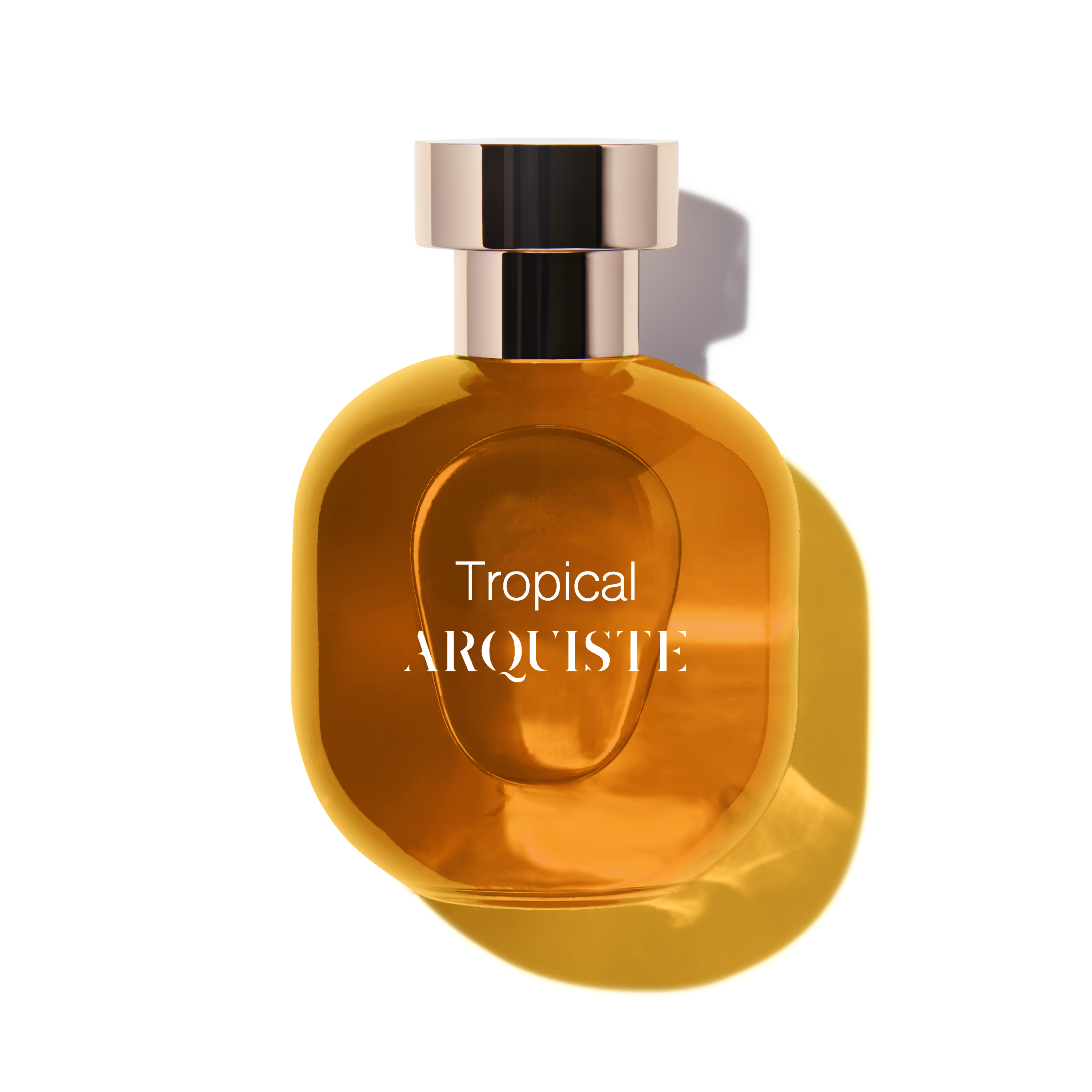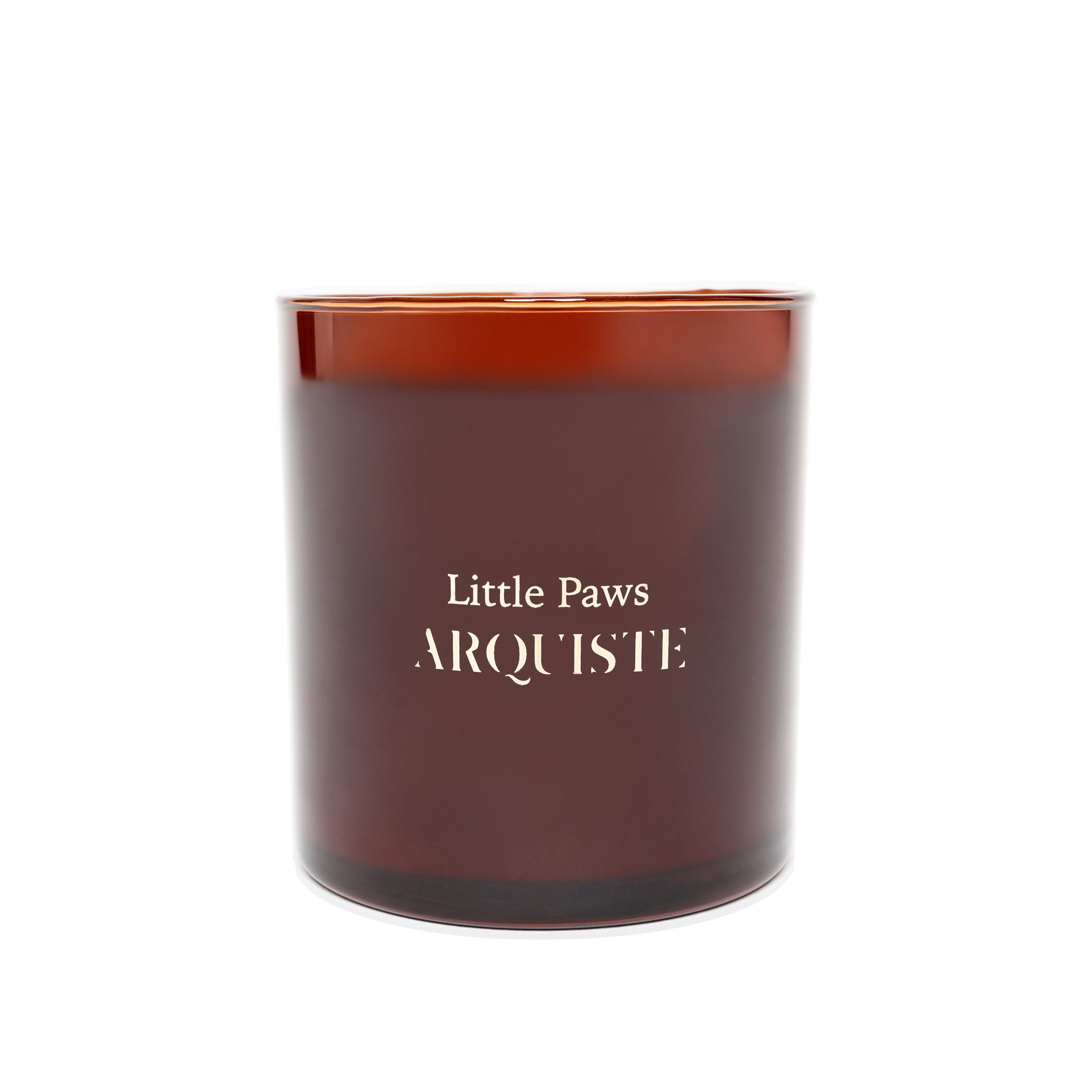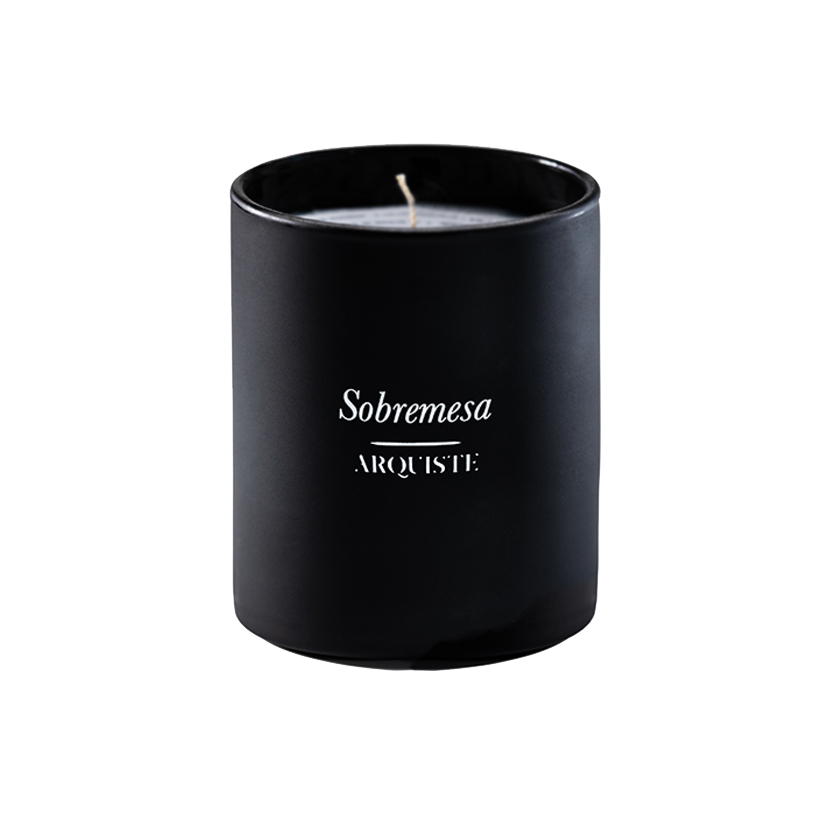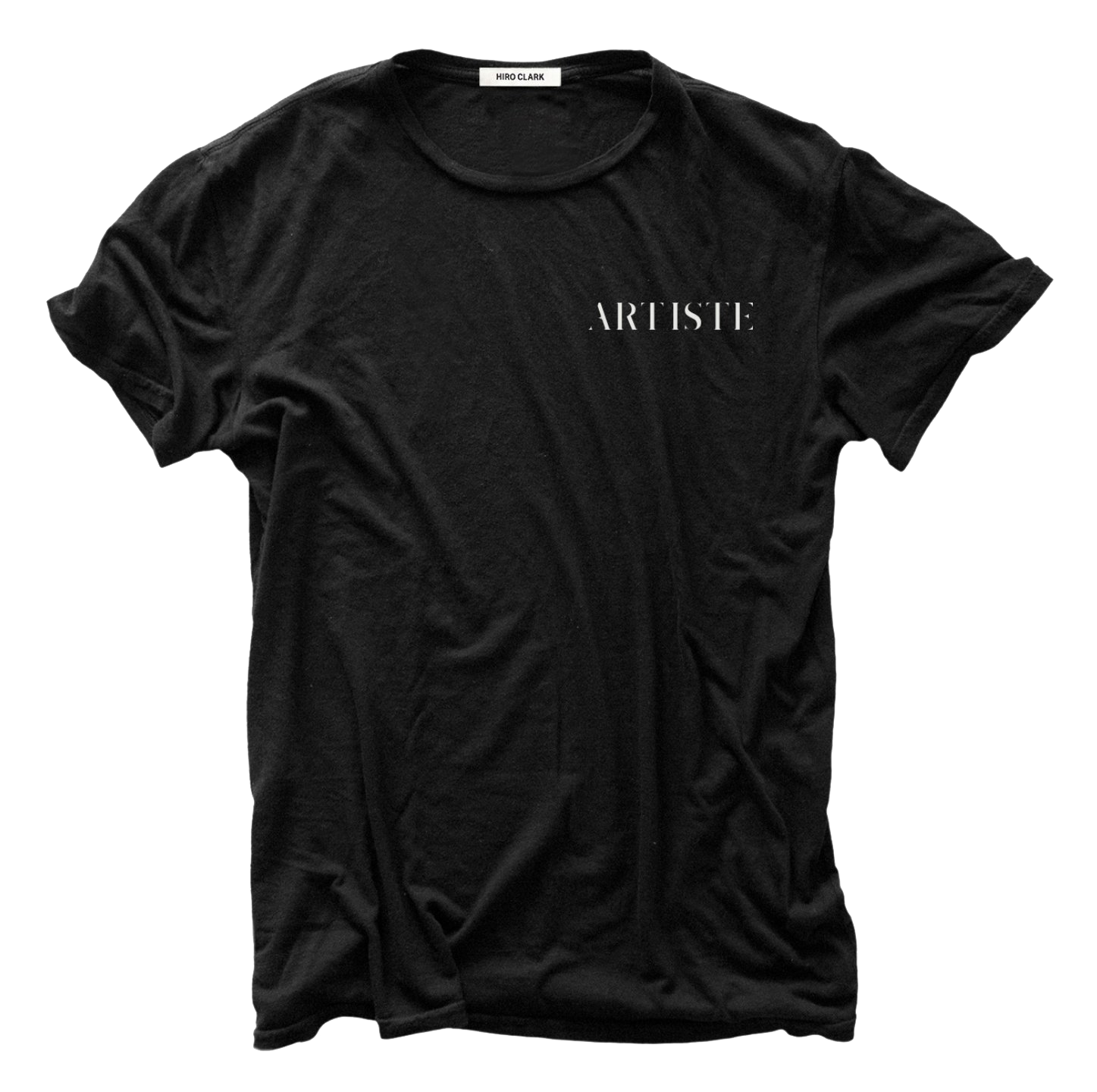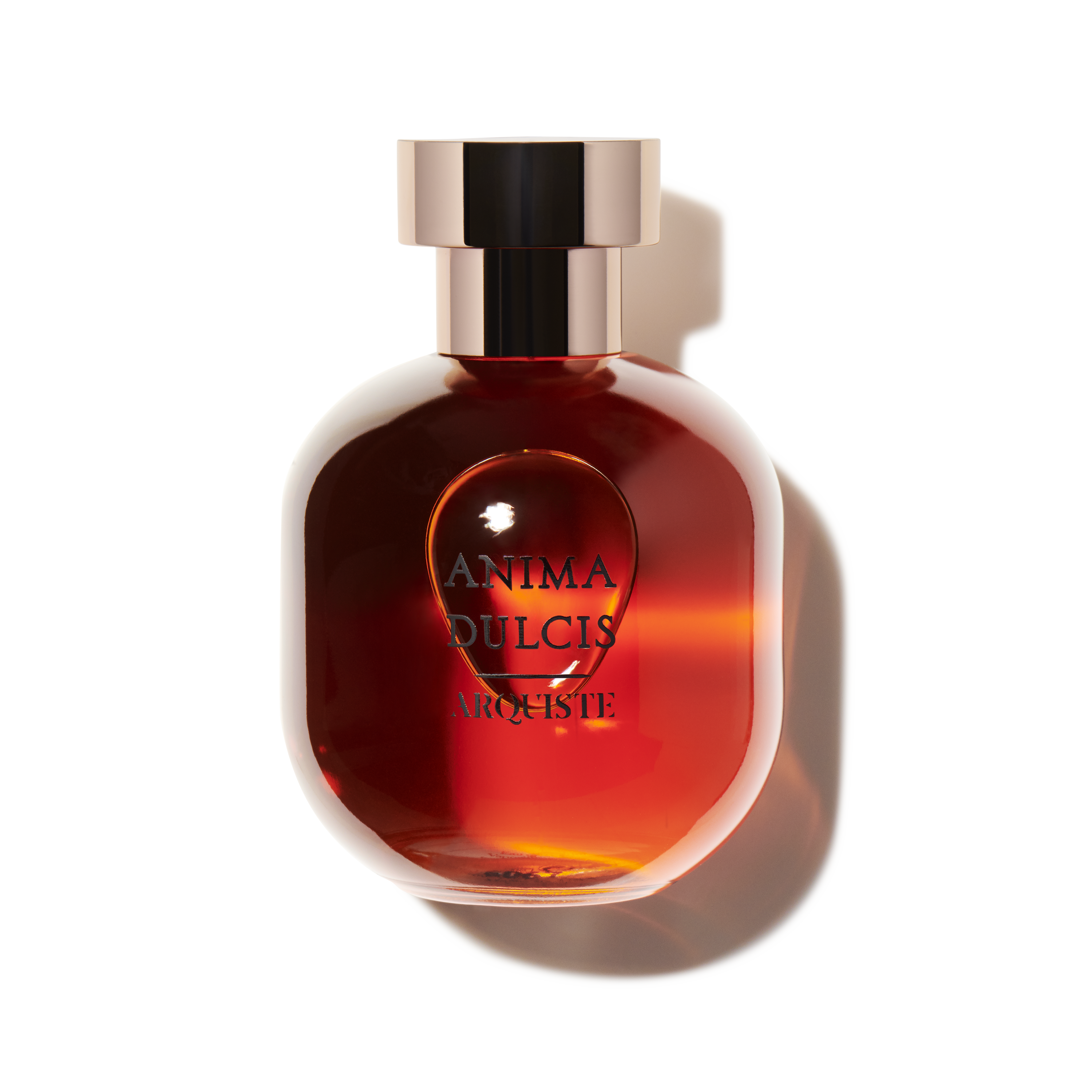
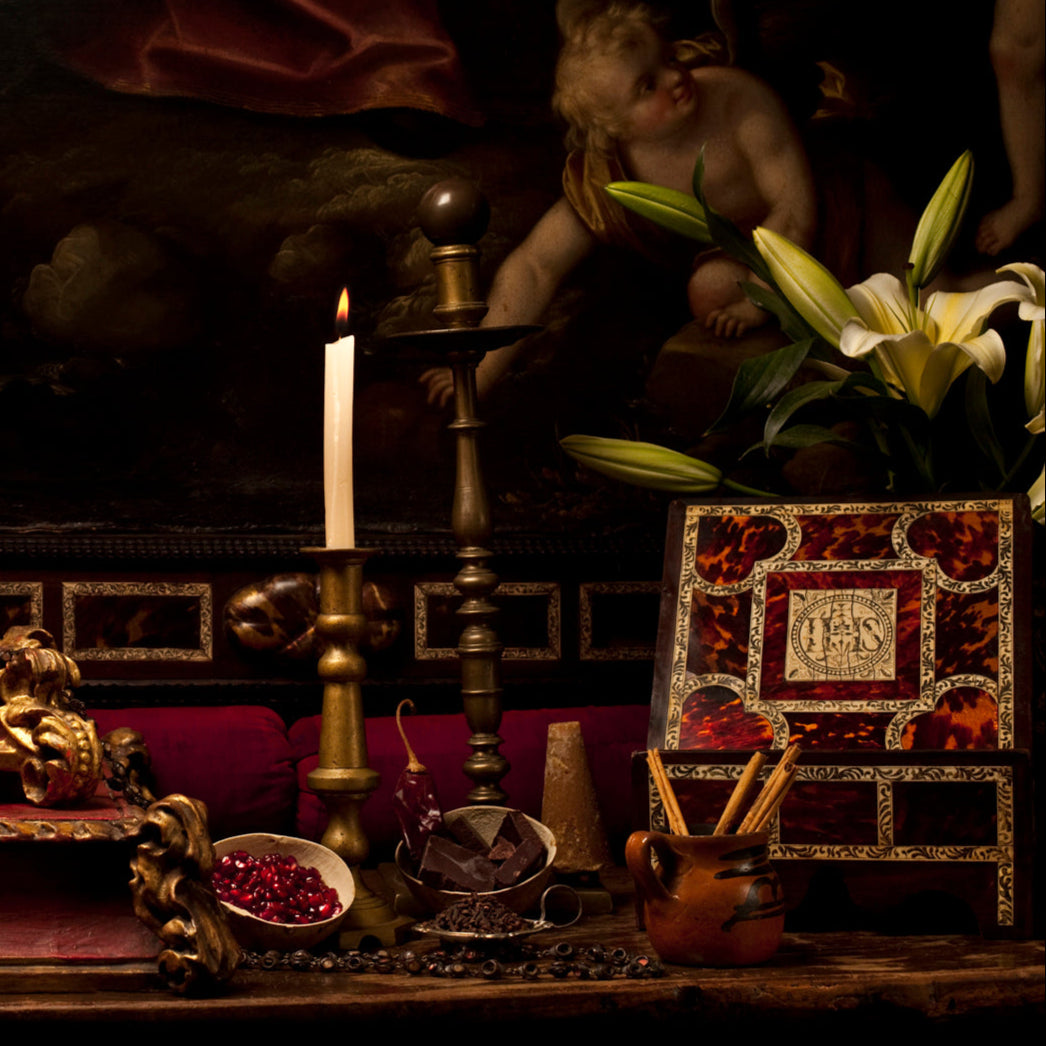
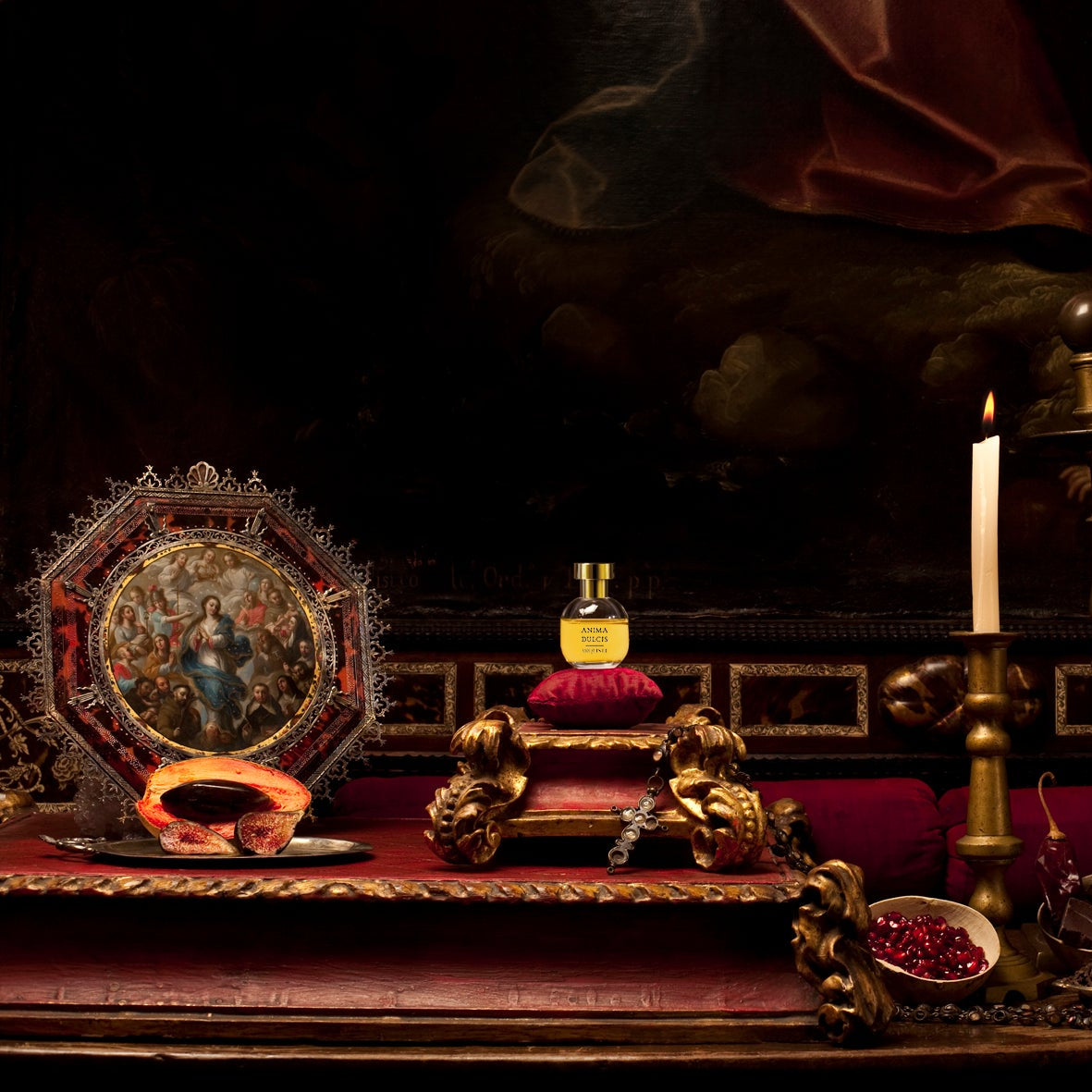
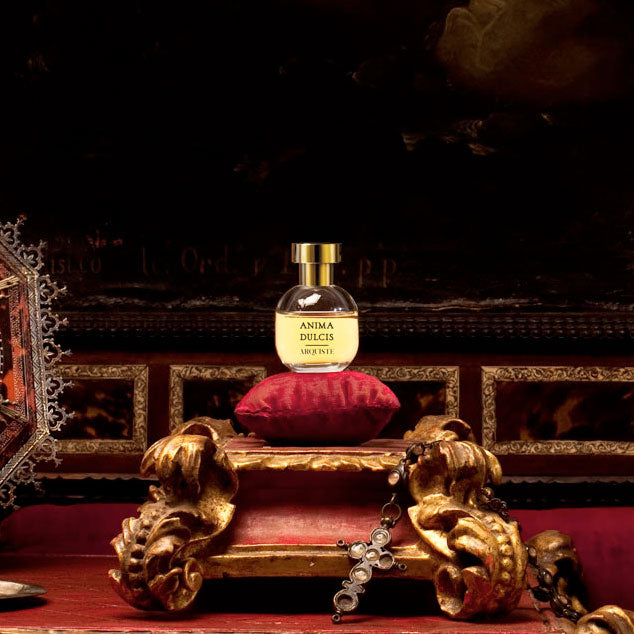
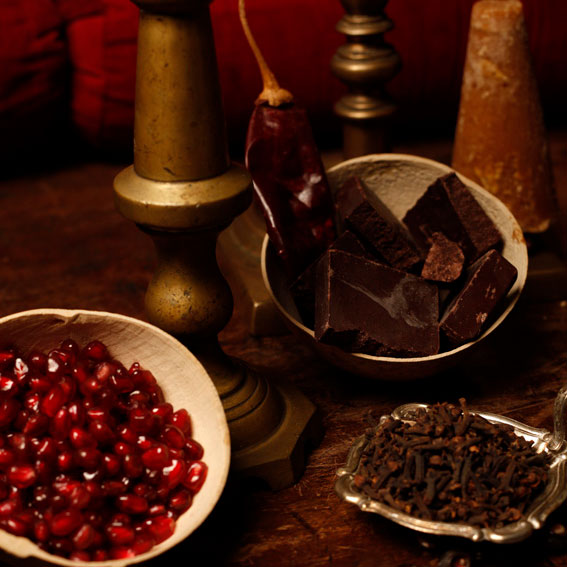
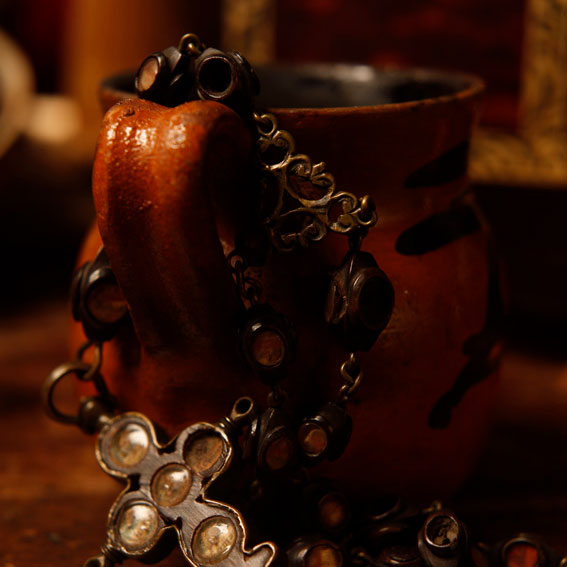
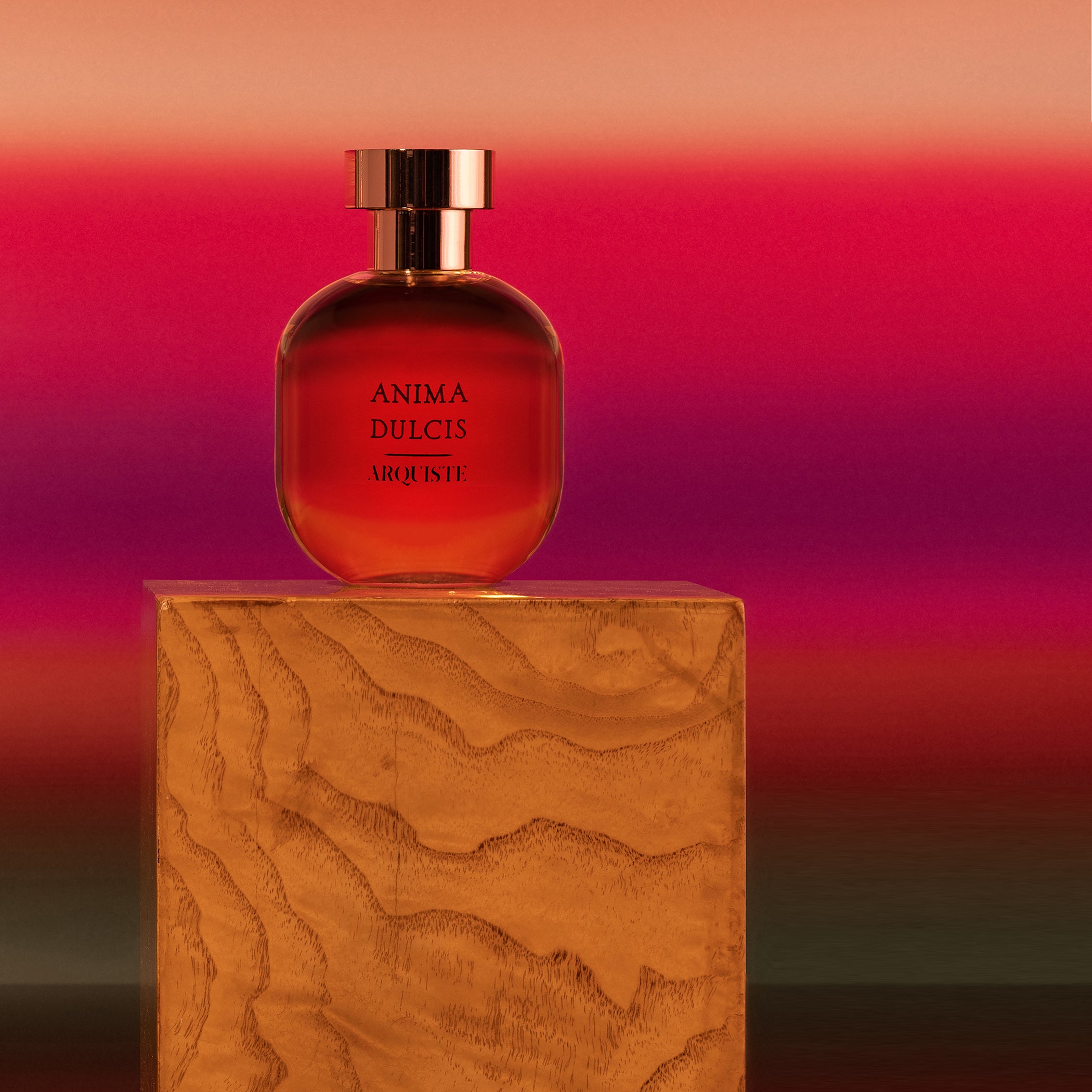
Top Notes
Sesame seed
Cinnamon bark
Oregano
Heart Notes
Clove buds
Cumin
Huele-de-noche (night-blooming jasmine)
Smoked chili infusion (ancho, guajillo and chipotle)
Base Notes
Mexican vanilla bean
Cocoa bean absolute
Chypre accord
Intro
An olfactive reconstruction of 17th century Viceregal Mexico: the mineral notes of terra cotta tile floors and stucco walls, the wooden beams and gilded altars give way to a heart of of spiced cacao. In the background, the incense from the church mixes with the kitchen spices, creating an evocative Baroque concoction between heaven and earth. Notes include: Cocoa absolute, Mexican vanilla, cinnamon, and a smoked chili infusion.
100 ml / 3.4 fl oz. Eau de Parfum.
History
November 1695, Mexico City.
Deep inside the halls of the Royal Convent of Jesus Maria, a group of reverent nuns prepares a Baroque recipe of spiced Cocoa. The brew is infused with an assortment of chilies that tempt rapture, and the air is rich with the scent of exotic spices. After centuries of safe-keeping within this closed world, their secrets are finally revealed to the senses.
Developed with Rodrigo Flores-Roux and Yann Vasnier.
Description
Rediscovering the olfactory traces of the Baroque Convent of Jesus Maria, where nuns worked on complex recipes of spicy, sweet scents. Baroque, complex & sensual.
The signature ARQUISTE design consists of an ergonomic round bottle that feels great in your hands. Made of the highest quality glass in Parma, Italy, its complemented by a high-quality engraved metal cap, a fine mist spray pump and the newest technology for a crystal spray tube.
More
- Despite the religious discipline in this aristocratic convent, the nuns of Jesus Maria had time to experiment in their kitchens. With the help of servants from all over the Spanish colonies, they created wonderful recipes that combined Asian and European spices with Mexican ingredients.
- Among the most popular recipes of the Jesus Maria convent in Mexico City were concoctions of hot chocolate with infusions of jasmine, cinnamon, vanilla and Mexican chilies.
- The proposed restoration for the Ex-Convent, including a reinterpretation of the complex history of the building was submitted as Master Thesis by Carlos Huber, as part of the M.S. degree in Historic Preservation, GSAPP, Columbia University.
Bio
– De Sigüenza y Góngora, Carlos, Parayso Occidental, plantado y cultivado en su magnífico Real Convento de Jesus María de México, Mexico, 1684.
– Álvarez Gasca, Pedro, Historia del Convento de Jesus María, document dated 1934; from the file found at the National Coordination of Historic Monuments, INAH.
– Benitez, Fernando, Los Demonios en el Convento: Sexo y Religion en la Nueva España, Ediciones Era, Mexico DF, 1985.
– Recetario de Dona Dominga de Guzman (a recipe book from 1750), Consejo Nacional para la Cultura y las Artes, Dirección General de Culturas Populares, Mexico, 1997.
– Corcuera de Mancera, Sonia, Entre gula y templanza: Un aspecto de la historia mexicana, Fondo de Cultura Económica, México, 1990.
Image

ANIMA DULCIS
Payment Methods





Shipping
ARQUISTE ships exclusively within the continental United States.
Please allow 1-3 days for us to receive and process your order during busy seasons. East Coast customers: Please add 3-4 business days after order processing. Central and West coast customers: 5-7 business days after order processing. To avoid delays or lost packages ARQUISTE® strongly recommends adding package protection to your order and shipping with UPS Ground.









ANIMA DULCIS
Top Notes
Sesame seed
Cinnamon bark
Oregano
Heart Notes
Clove buds
Cumin
Huele-de-noche (night-blooming jasmine)
Smoked chili infusion (ancho, guajillo and chipotle)
Base Notes
Mexican vanilla bean
Cocoa bean absolute
Chypre accord
Intro
An olfactive reconstruction of 17th century Viceregal Mexico: the mineral notes of terra cotta tile floors and stucco walls, the wooden beams and gilded altars give way to a heart of of spiced cacao. In the background, the incense from the church mixes with the kitchen spices, creating an evocative Baroque concoction between heaven and earth. Notes include: Cocoa absolute, Mexican vanilla, cinnamon, and a smoked chili infusion.
100 ml / 3.4 fl oz. Eau de Parfum.
History
November 1695, Mexico City.
Deep inside the halls of the Royal Convent of Jesus Maria, a group of reverent nuns prepares a Baroque recipe of spiced Cocoa. The brew is infused with an assortment of chilies that tempt rapture, and the air is rich with the scent of exotic spices. After centuries of safe-keeping within this closed world, their secrets are finally revealed to the senses.
Developed with Rodrigo Flores-Roux and Yann Vasnier.
Description
Rediscovering the olfactory traces of the Baroque Convent of Jesus Maria, where nuns worked on complex recipes of spicy, sweet scents. Baroque, complex & sensual.
The signature ARQUISTE design consists of an ergonomic round bottle that feels great in your hands. Made of the highest quality glass in Parma, Italy, its complemented by a high-quality engraved metal cap, a fine mist spray pump and the newest technology for a crystal spray tube.
More
- Despite the religious discipline in this aristocratic convent, the nuns of Jesus Maria had time to experiment in their kitchens. With the help of servants from all over the Spanish colonies, they created wonderful recipes that combined Asian and European spices with Mexican ingredients.
- Among the most popular recipes of the Jesus Maria convent in Mexico City were concoctions of hot chocolate with infusions of jasmine, cinnamon, vanilla and Mexican chilies.
- The proposed restoration for the Ex-Convent, including a reinterpretation of the complex history of the building was submitted as Master Thesis by Carlos Huber, as part of the M.S. degree in Historic Preservation, GSAPP, Columbia University.
Bio
– De Sigüenza y Góngora, Carlos, Parayso Occidental, plantado y cultivado en su magnífico Real Convento de Jesus María de México, Mexico, 1684.
– Álvarez Gasca, Pedro, Historia del Convento de Jesus María, document dated 1934; from the file found at the National Coordination of Historic Monuments, INAH.
– Benitez, Fernando, Los Demonios en el Convento: Sexo y Religion en la Nueva España, Ediciones Era, Mexico DF, 1985.
– Recetario de Dona Dominga de Guzman (a recipe book from 1750), Consejo Nacional para la Cultura y las Artes, Dirección General de Culturas Populares, Mexico, 1997.
– Corcuera de Mancera, Sonia, Entre gula y templanza: Un aspecto de la historia mexicana, Fondo de Cultura Económica, México, 1990.
Image

